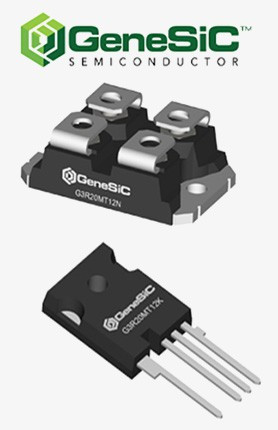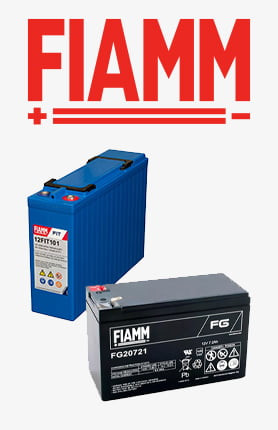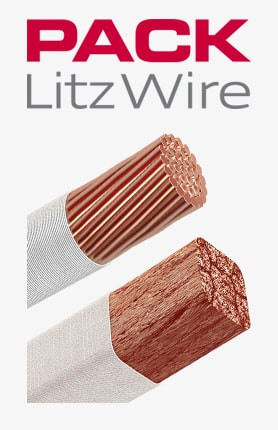trebuie să fii logat
-
întoarce-teX
-
Componente
-
-
Category
-
Semiconductoare
- Diode
- tiristoare
- Module izolate electric
- Redresoare în punte
-
Tranzistoare
- tranzistoare GeneSiC
- Module MOSFET Mitsubishi SiC
- Module MOSFET STARPOWER SiC
- Module MOSFET ABB SiC
- Module IGBT de la MITSUBISHI
- Module de tranzistori MITSUBISHI
- module MITSUBISHI MOSFET
- Module de tranzistori ABB
- Module IGBT de la POWEREX
- Module IGBT - de la INFINEON (EUPEC)
- Elemente semiconductoare din carbură de siliciu
- Accesați subcategoria
- Șoferii
- Blocuri de putere
- Accesați subcategoria
- Traductoare de curent și tensiune LEM
-
Componente pasive (condensatori, rezistențe, siguranțe, filtre)
- Rezistoare
-
Siguranțe
- Siguranțe miniaturale pentru sisteme electronice din seria ABC și AGC
- Siguranțe tubulare cu acțiune rapidă
- Inserții întârziate cu caracteristici GL/GG și AM
- Legături sigure ultra-rapide
- Siguranțe standard britanice și americane cu acțiune rapidă
- Siguranțe cu acțiune rapidă standard european
- Siguranțe de tracțiune
- Siguranțe de înaltă tensiune
- Accesați subcategoria
-
Condensatoare
- Condensatoare pentru motoare
- Condensatoare electrolitice
- Condensatori Icel Film
- Condensatoare de putere
- Condensatoare pentru circuite DC
- Condensatoare de compensare a puterii
- Condensatoare de înaltă tensiune
- Condensatoare pentru încălzire prin inducție
- Condensatoare de impulsuri
- Condensatoare DC LINK
- Condensatoare pentru circuite AC/DC
- Accesați subcategoria
- Filtre anti-interferențe
- Supercondensatoare
-
Protecție la supratensiune
- Descărcătoare de supratensiune pentru aplicații RF
- Descărcătoare de supratensiune pentru sisteme de vedere
- Descărcătoare de supratensiune pentru linia de alimentare
- Descărcătoare de supratensiune cu LED
- Descărcătoare de supratensiune pentru fotovoltaice
- Descărcătoare de supratensiune pentru sisteme de cântărire
- Descărcătoare de supratensiune pentru fieldbus
- Accesați subcategoria
- Filtre de emisii revelatoare TEMPEST
- Accesați subcategoria
-
Relee și Contactoare
- Teoria releelor și contactoarelor
- Relee cu stare solidă trifazată CA
- Relee cu stare solidă DC
- Regulatoare, sisteme de control și accesorii
- Porniri ușoare și contactoare inversoare
- Relee electromecanice
- Contactoare
- Comutatoare rotative
-
Relee cu stare solidă CA monofazate
- Relee cu stare solidă CA monofazate Seria 1 | D2425 | D2450
- Relee semifazate CA monofazate, seria CWA și CWD
- Relee semifazate CA monofazate seriile CMRA și CMRD
- Relee cu stare solidă CA monofazate Seria PS
- Relee cu stare solidă AC seria duble și cvadruple D24 D, TD24 Q, H12D48 D
- Relee monofazate din seria GN
- Relee cu stare solidă CA monofazate Seria CKR
- Relee monofazate pentru șină DIN AC SERIA ERDA și ERAA
- Relee AC monofazate pentru curent de 150A
- Relee duble cu stare solidă integrate cu radiator pe șină DIN
- Accesați subcategoria
- Relee cu stare solidă imprimabile monofazate CA
- Relee de interfață
- Accesați subcategoria
- Miezuri și alte componente inductive
- Radiatoare, Varistoare, Protectie termica
- Fani
- Aer conditionat, Accesorii tablou, Racitoare
-
Baterii, încărcătoare, surse de alimentare tampon și convertoare
- Baterii, încărcătoare - descriere teoretică
- Baterii litiu-ion. Baterii personalizate. Sistem de management al bateriei (BMS)
- baterii
- Incarcatoare de baterii si accesorii
- UPS și surse de alimentare tampon
- Convertoare si accesorii pentru fotovoltaice
- Stocarea energiei
- Pile de combustibil cu hidrogen
- Celule litiu-ion
- Accesați subcategoria
-
Automatizare
- Elevatoare Spiralift
- Piese pentru drone Futaba
- Întrerupătoare de limită, Micro întrerupătoare
- Senzori, traductoare
- Pirometre
- Contoare, relee de timp, contoare de panou
- Echipament industrial de protectie
- Semnale luminoase și sonore
- Cameră termică
- Afișaje LED
- Butoane și întrerupătoare
- Accesați subcategoria
-
Cabluri, fire Litz, Conduite, Conexiuni flexibile
- Firele
- Presetupe și manșoane
- Chipurile
-
Cabluri pentru aplicatii speciale
- Cabluri de prelungire și compensare
- Cabluri de termocuplu
- Cabluri de conectare pentru senzori PT
- Cabluri cu mai multe fire de temperatură. -60°C până la +1400°C
- Cabluri de medie tensiune SILICOUL
- Cabluri de aprindere
- Cabluri de incalzire
- Cabluri cu un singur conductor temp. -60°C până la +450°C
- Fire de cale ferată
- Cabluri de încălzire în ex
- Cabluri pentru industria de apărare
- Accesați subcategoria
- tricouri
-
Impletituri
- Impletituri plate
- Impletituri rotunde
- Impletituri foarte flexibile - plate
- Impletituri foarte flexibile - rotunde
- Impletituri cilindrice de cupru
- Impletituri si capace cilindrice din cupru
- Curele flexibile de împământare
- Impletituri cilindrice din otel zincat si inoxidabil
- Impletituri de cupru izolate PVC - temperatura de pana la 85 de grade C
- Impletituri plate din aluminiu
- Kit de conectare - impletituri si tuburi
- Accesați subcategoria
- Echipament de tracțiune
- Capse de cablu
- Sine flexibile izolate
- Sine flexibile multistrat
- Sisteme de management al cablurilor
- Accesați subcategoria
- Vezi toate categoriile
-
Semiconductoare
-
-
- Furnizori
-
Aplicații
- Automatizare HVAC
- Automatizare industrială
- Băncile de energie
- Cercetare si masuratori de laborator
- Componente pentru zonele cu pericol de explozie (EX)
- Echipament industrial de protectie
- Echipamente pentru dulapuri de distributie si control
- Exploatare minieră, metalurgie și turnătorie
- Imprimare
- Încălzire prin inducție
- Inginerie energetică
- Mașini CNC
- Masini de sudura si sudori
- Mașini de uscare și prelucrare a lemnului
- Masini pentru termoformarea materialelor plastice
- Măsurarea și reglarea temperaturii
- Motoare si transformatoare
- Surse de alimentare (UPS) și sisteme redresoare
- Tracțiune cu tramvai și feroviar
- Unități DC și AC (invertoare)
-
Instalare
-
-
Inductori
-
-
Dispozitive de inducție
-
-
Serviciu
-
- Kontakt
- Zobacz wszystkie kategorie
Basics of Electromagnetic Compatibility: What Is It and Why Is It Important? 3 of 8

Basics of Electromagnetic Compatibility: What Is It and Why Is It Important? 3 of 8
Overview of Key Regulations on Electromagnetic Compatibility (EMC), such as EMC standards in the European Union:
Electromagnetic Compatibility (EMC) is an essential aspect of designing, manufacturing, and using electronic devices. To ensure consistent standards and minimize electromagnetic interference within the European Union, a series of regulations concerning EMC have been introduced. Here is an overview of the main regulations and EMC standards in the European Union:
- EMC Directive (2014/30/EU): The EMC Directive provides the legal framework for Electromagnetic Compatibility in the European Union. It establishes basic requirements for the emission and immunity of electromagnetic disturbances for electronic devices and systems. The EMC Directive applies to both device manufacturers and users, regulating issues related to CE marking and declaration of conformity.
- EMC Standards: Under the EMC Directive, the European Commission has adopted a series of technical standards that describe testing methods and compliance criteria for EMC requirements. Examples of these standards include EN 55032 (radiated emissions), EN 55035 (conducted emissions), EN 61000-3-2 (harmonics), and EN 61000-3-3 (flicker and voltage fluctuations). These standards serve as a technical basis for the industry and enable manufacturers to meet EMC requirements.
- CE Certification: CE marking is required for many types of electronic devices within the European Union. The marking signifies that the device complies with the applicable EMC requirements and other safety aspects. CE certification confirms compliance with relevant regulations and standards, enabling the free movement of the device within the EU market.
- European Committee for Standardization (CEN): CEN is an organization responsible for developing technical standards across various fields. In the field of EMC, CEN develops and publishes European standards applicable in all EU member states. These standards serve as a reference for the industry and ensure coherence and compliance in the field of EMC.
By implementing these regulations and EMC standards within the European Union, manufacturers of electronic devices have clear guidelines regarding the minimum requirements related to Electromagnetic Compatibility. These actions contribute to market consistency, minimize electromagnetic interference, and protect users from potential risks associated with electromagnetic disturbances.
Requirements and standards for Electromagnetic Compatibility (EMC) vary depending on the industry and sector in which electronic devices are used.
The introduced regulations and standards aim to adapt EMC requirements to the specific conditions and risks present in different sectors. Here are a few examples of EMC requirements and standards for various industries:

Energy Industry
In the energy sector, where electrical devices such as transformer stations, photovoltaic panels, and generators are used, specific EMC standards are required. The aim is to minimize the impact of electromagnetic interference on power grids and ensure the reliability and durability of devices in challenging operating conditions, such as surges or conducted disturbances.

Medical Industry
In the medical sector, where medical devices such as diagnostic equipment, patient monitors, MRI machines, and defibrillators are used, high EMC standards are required. EMC requirements in this industry aim to ensure the safety of patients and medical personnel, minimize the risk of interference with the operation of medical devices, and ensure proper functioning of these devices in hospital environments.

Automotive Industry
In the automotive sector, where electronic devices are used in vehicles, such as engine control systems, navigation systems, and safety systems, strict EMC requirements apply. EMC standards in this sector aim to ensure the reliable operation of automotive electronics and minimize the impact of electromagnetic interference on safety-critical systems and driving comfort.

Aerospace Industry
In the aerospace industry, where electronic devices are used in airplanes, satellites, and other aerospace systems, EMC requirements are particularly stringent. Safety, reliability, and avoidance of electromagnetic interference are crucial in these sectors. EMC standards in this area aim to minimize the risk of interference that could affect the operation of navigation, communication, and radar systems.
It is important for manufacturers and users of electronic devices in specific industries to be aware of and adhere to specific EMC requirements for their sectors. Understanding these requirements and applying appropriate EMC norms and standards contributes to ensuring the safe, reliable, and compliant operation of electronic devices in various industries.
The consequences of not meeting Electromagnetic Compatibility (EMC) requirements can be serious and have a negative impact on electronic devices, users, and the environment.
Electromagnetic Interference: Failure to meet EMC requirements can lead to mutual interference between electronic devices. This can result in device instability, errors in data transmission, system failures, or even complete device shutdown.
Data Loss: Improper device operation caused by electromagnetic interference can lead to data loss. In the case of information systems, malfunctioning can result in the loss of critical information, which can have significant business and financial consequences.
Safety: Electromagnetic interference can pose a safety hazard. In sectors such as medicine, defense, or transportation, failure to meet EMC requirements can disrupt critical system operation, which in turn can jeopardize the health, life, or safety of users.
Violation of Regulations and Standards: Failure to meet EMC requirements can result in violations of industry or regional regulations and standards. This can entail legal consequences such as fines, sanctions, or bans on introducing devices to the market.
Loss of Customer Trust: If electronic devices fail to meet EMC requirements and frequently experience malfunctions or disturbances, it can lead to a loss of customer trust. Negative experiences related to improper device operation can impact the reputation of the manufacturer, resulting in the loss of customers and financial losses.
Therefore, meeting EMC requirements is extremely important. By applying appropriate design, testing, and device protection techniques, it is possible to minimize the risk of electromagnetic interference and ensure reliability, durability, and compliance with regulations. Businesses and manufacturers should be aware of the potential consequences of not meeting EMC requirements and strive for the highest quality and standards compliance to protect their interests and user safety.
Related posts
 Now available – DC/DC converters from PREMIUM
Now available – DC/DC converters from PREMIUM
 New release in DACPOL lighting for lathes – Kira covers
New release in DACPOL lighting for lathes – Kira covers




Leave a comment